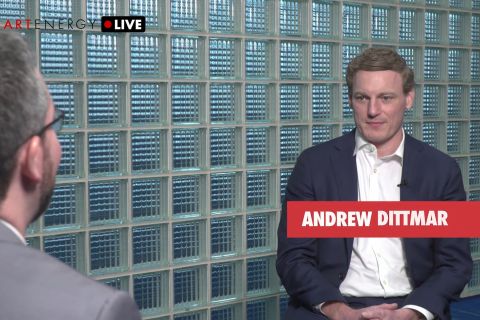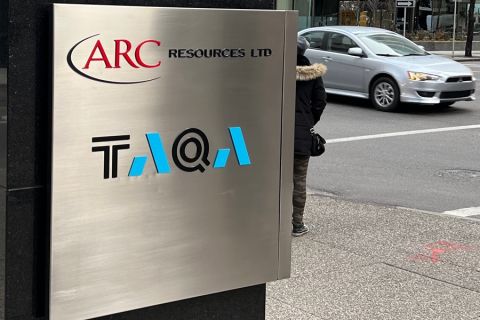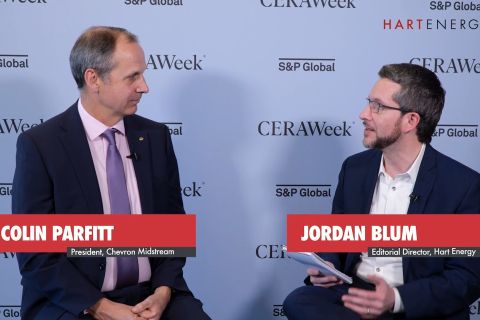The "troubled E&P company" seems to be a problem of the past in this continued environment of strong oil and gas prices, daily reports of producers applying free cash flow to debt reduction, and the use of hedging to assure strong prices for a while. Still, some types of storms lurk on the horizon that could sink less-sea-worthy E&P ships, according to Standard & Poor's credit-rating analysts. In choppy waters are companies that are taking on significant debt when buying reserves and production, is being achieved these days only at historically high prices. These companies are likely candidates for downgrades if commodity prices wane, reports John Thieroff, lead S&P energy analyst. Another gale in the making is rising finding and development (F&D) costs, which are in large part the result of producers going after less-economic prospects. Many investment-grade companies need $18 per barrel of oil equivalent (BOE) to break even, up from about $12 a few years ago, Thieroff reports. To do better than break-even, many producers need to get $30 at the wellhead for their oil and $5 for their gas, he says. New technology could help, but Thieroff and his colleagues at S&P report that they don't see any magic in the near future. "The most vulnerable companies (to rising F&D costs) are those with short reserve lives as their high asset turnover causes them to import inflation trends more rapidly than longer-lived companies." While producers appear to be throwing excess cash flow at debt, Thieroff says there has been no material change in the E&P industry's total debt per BOE, "although the industry should have the capacity to lower this measure materially in the first half of 2005 should they choose to do so." Overall, he and his colleagues expect the trend of generally improved credit ratings among producers to slow down in 2005. "While elevated commodity prices have buoyed the sector, weaknesses remain," Thieroff concludes. Following are his and his fellow analysts' comments on some producers: Devon Energy Corp. (BBB) When its deepwater Gulf of Mexico potential comes online, its F&D-cost profile will improve. "Debt on a per-BOE basis remains very high, although this measure does not allocate debt to Devon's considerable midstream operations." Anadarko Petroleum Corp. (BBB+) S&P is expecting the company to "eventually concentrate its efforts on increased investment in new growth areas." Apache Corp. (A-) "...Debt leverage and cash flow protection measures are strong for the rating. Still, Apache's appetite for property acquisitions and related financing activity may impact future credit quality." Burlington Resources Inc. (BBB+) The company's exposure to North American natural gas prices has been a boon. It has a $2-billion capital expenditure budget for 2005, which can be funded from expected cash flow, while maintaining the BBB+ profile. Chesapeake Energy Corp. (BB-) The analysts expect the company will "continue funding acquisitions in a prudent manner. Continued improvements to Chesapeake's leverage profile and capital structure could lead to a ratings upgrade." XTO Energy Inc. (BBB-) "Future acquisitions are expected to be funded in at least a balanced manner." Pioneer Natural Resources Co. (BBB-) The analysts have a negative outlook on Pioneer's credit rating, due to the increased debt it incurred in its purchase of Evergreen Resources Inc. "Pioneer's outlook could be revised to stable as the company makes good on its promise to reduce total debt by $600 million from free cash flow. A downgrade could occur if the company were to delay its debt-reduction program and/or experience operational difficulties." EOG Resources Inc. (BBB+) The outlook is good for a better credit rating. "Solid internal growth prospects, a strong balance sheet and ample liquidity support the rating." Forest Oil Corp. (BB-) Higher commodity prices have helped Forest offset its high costs that have only worsened with its acquisition of The Wiser Oil Co. The analysts expect the company to sell some assets. "Proceeds from asset rationalization and excess cash flow will be used to reduce debt to a target of just over $800 million, on an unadjusted basis, as of year-end 2004." -Nissa Darbonne, Executive Editor
Recommended Reading
US Refiners to Face Tighter Heavy Spreads this Summer TPH
2024-04-22 - Tudor, Pickering, Holt and Co. (TPH) expects fairly tight heavy crude discounts in the U.S. this summer and beyond owing to lower imports of Canadian, Mexican and Venezuelan crudes.
Exclusive: Andrew Dittmar Expects Increased Public M&A in 2024
2024-02-15 - In this Hart Energy LIVE Exclusive, Andrew Dittmar, Enverus Intelligence's senior vice president, compares 2023 consolidation to what he expects in 2024, including more public to public deals.
ARC Resources Adds Ex-Chevron Gas Chief to Board, Tallies Divestments
2024-02-11 - Montney Shale producer ARC Resources aims to sign up to 25% of its 1.38 Bcf/d of gas output to long-term LNG contracts for higher-priced sales overseas.
Exclusive: Chevron Balancing Low Carbon Intensity, Global Oil, Gas Needs
2024-03-28 - Colin Parfitt, president of midstream at Chevron, discusses how the company continues to grow its traditional oil and gas business while focusing on growing its new energies production, in this Hart Energy Exclusive interview.
Majors Aim to Cycle-proof Oil by Chasing $30 Breakevens
2024-02-14 - Majors are shifting oilfields with favorable break-even points following deeper and more frequent boom cycles in the past decade and also reflects executives' belief that current high prices may not last.




